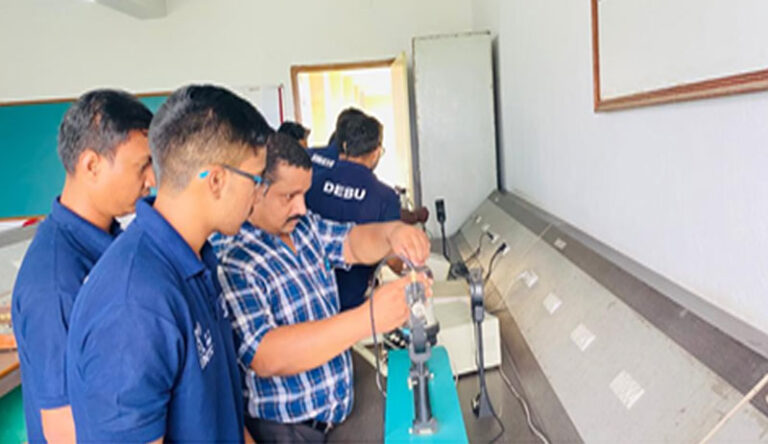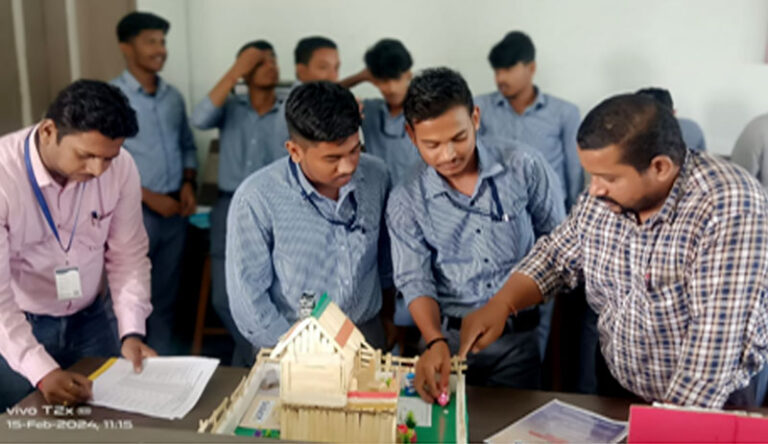Electronics and Telecommunication Engineering Laboratories
Connecting Innovation with Communication

Technical Assitants
Mr. Prabhat Kumar Sahoo
EC Laboratory
CE Laboratory
MPMC Laboratory
Image Processing/Project Laboratory
Email: pravatsahoo@driems.ac.in
Mrs. Anita Sahoo
DI&T Laboratory
VLSI Laboratory
DSP Laboratory
Email: anita@driems.ac.in
Very Large Scale Integration (VLSI) Laboratory
Available Systems: Typically, the VLSI Laboratory is equipped with 20-30 high-performance computers designed to handle the computational demands of VLSI design and simulation tasks. These systems usually have multi-core processors, large RAM (16GB or more), and SSDs for fast data access.
Software:
Design Tools: Synopsys, Cadence, and Mentor Graphics are commonly used for VLSI design, simulation, and verification.
HDL Tools: VHDL and Verilog environments for hardware description and modeling.
FPGA Software: Tools like Xilinx Vivado or Intel Quartus for FPGA design and implementation.
Other Resources: The lab includes access to FPGA kits, ASIC design tools, and prototyping boards. High-speed internet, dual monitors for design work, and access to relevant libraries and databases are also essential.
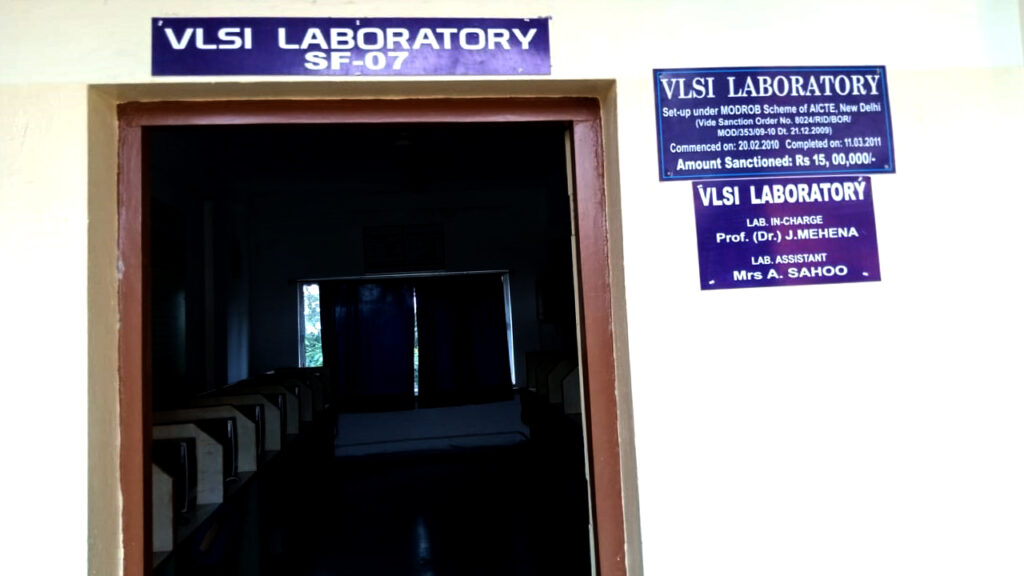

Digital Signal Processing (DSP) Laboratory


Microprocessor & Microcontroller (MPMC) Laboratory
Available Systems: The Microprocessor Lab is typically equipped with 15-20 computers, each configured for assembly language programming and embedded systems development.
Software:
Assembler and Simulator Tools: For microprocessor programming and simulation, such as Keil uVision, MPLAB, and MASM.
Embedded Systems Software: Tools for developing and debugging microcontroller-based projects, such as Arduino IDE, AVR Studio, and STM32CubeIDE.
Other Resources: The lab includes microprocessor and microcontroller development kits (e.g., 8086, 8051, ARM), breadboards, and electronic components for circuit assembly. Additionally, logic analyzers, oscilloscopes, and power supplies are essential for testing and debugging.
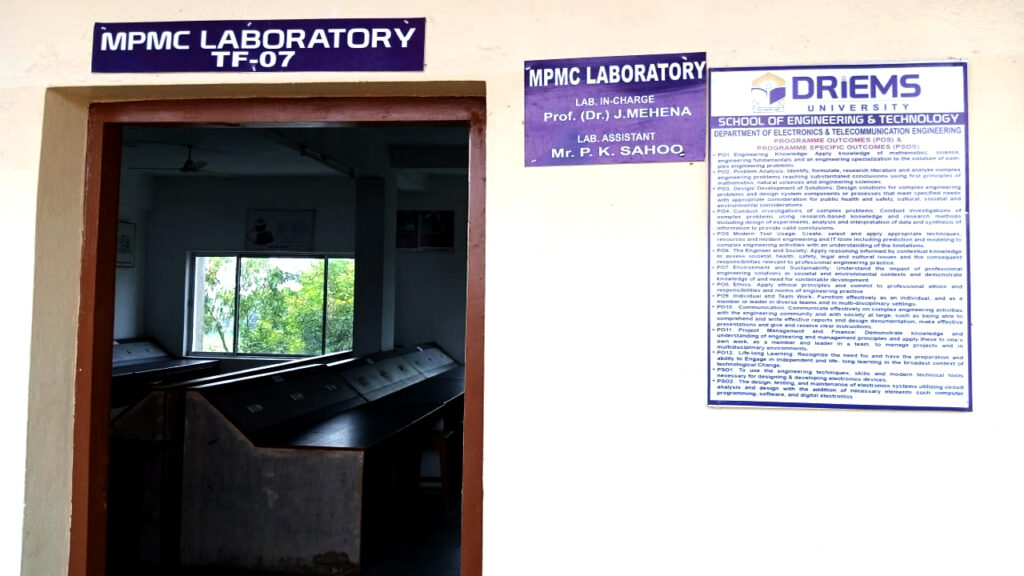
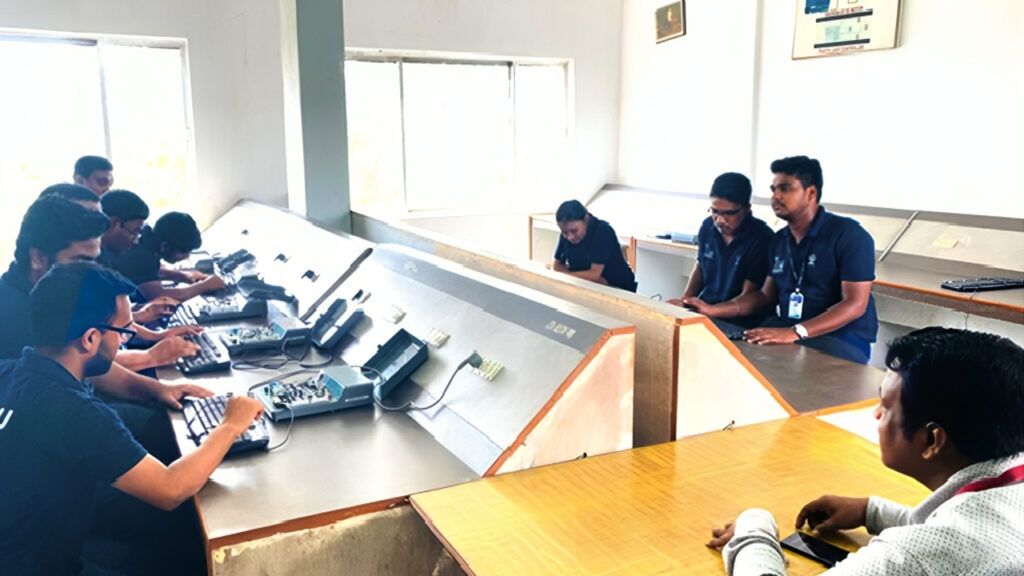
Communication Engineering (CE) Laboratory
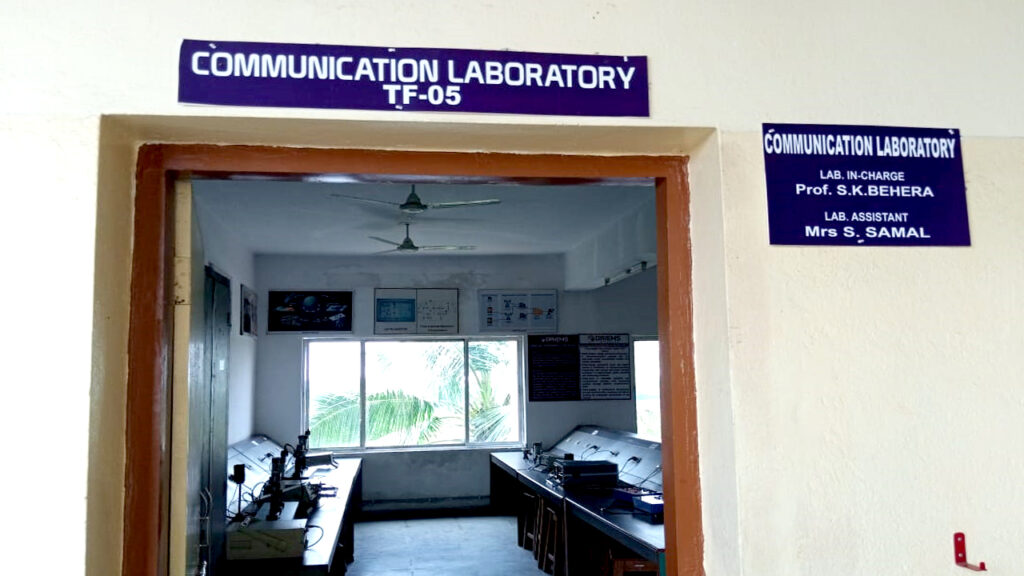
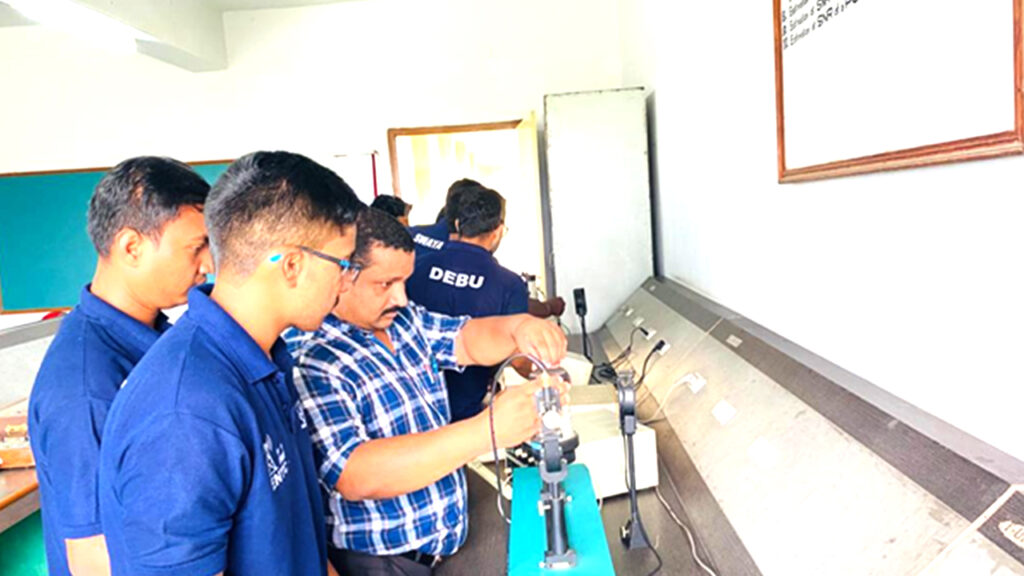
Available Systems: This lab usually has 20-25 computers, optimized for simulating and analyzing communication systems and networks.
Software:
Communication Simulation Tools:
MATLAB with Communication System Toolbox, GNU Radio, and NS-3 for network simulation and analysis.
Modulation and Demodulation Kits:
Hardware kits for practical experiments in AM, FM, and digital modulation techniques.
Other Resources: The lab includes signal generators, spectrum analyzers, and RF testing equipment. Antenna training systems and software-defined radio (SDR) kits are also available for advanced communication studies.
Image Processing/Project Laboratory
Available Systems: The Image Processing Lab is typically equipped with 20-25 high-performance computers capable of handling large datasets and complex algorithms.
Software:
Image Processing Tools: MATLAB with Image Processing Toolbox, OpenCV, and Python libraries like NumPy, SciPy, and scikit-image for image analysis and processing.
Graphics Software: Tools like Adobe Photoshop and GIMP for image manipulation and enhancement.
Other Resources: High-resolution cameras, scanners, and specialized image acquisition devices are essential for capturing and analyzing images. The lab may also include GPUs for accelerating image processing tasks.
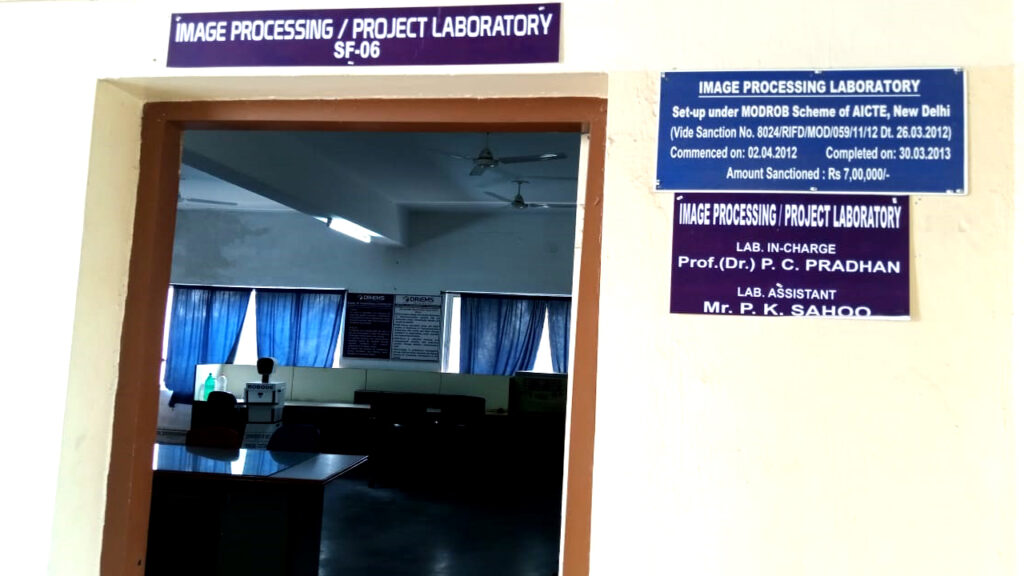
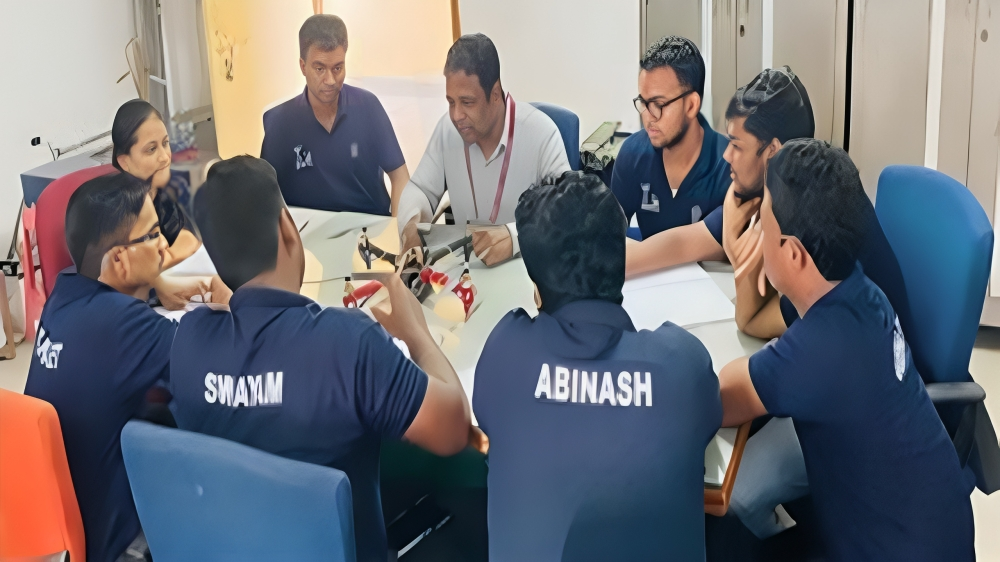
Electronics Circuit (EC) Laboratory
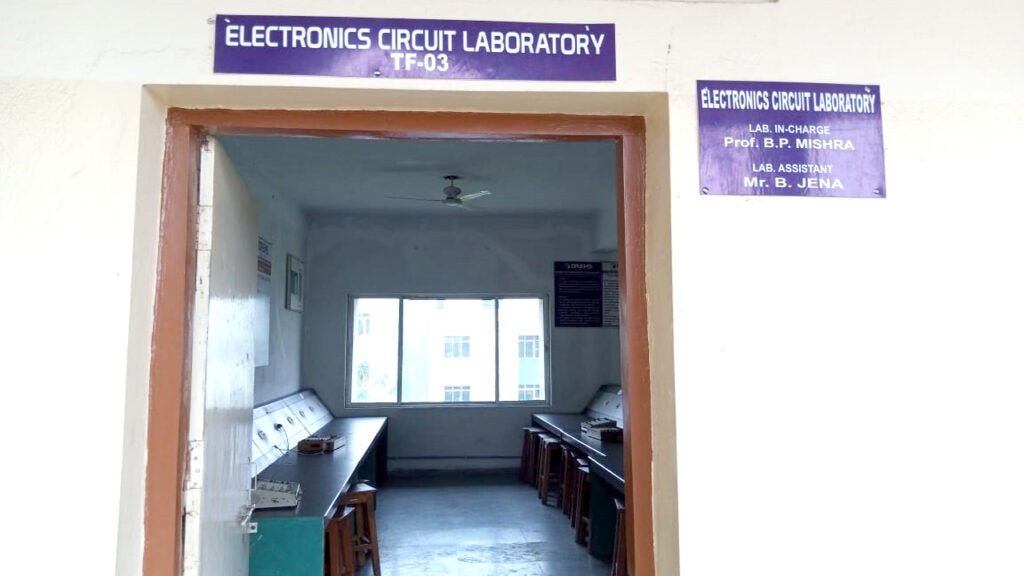
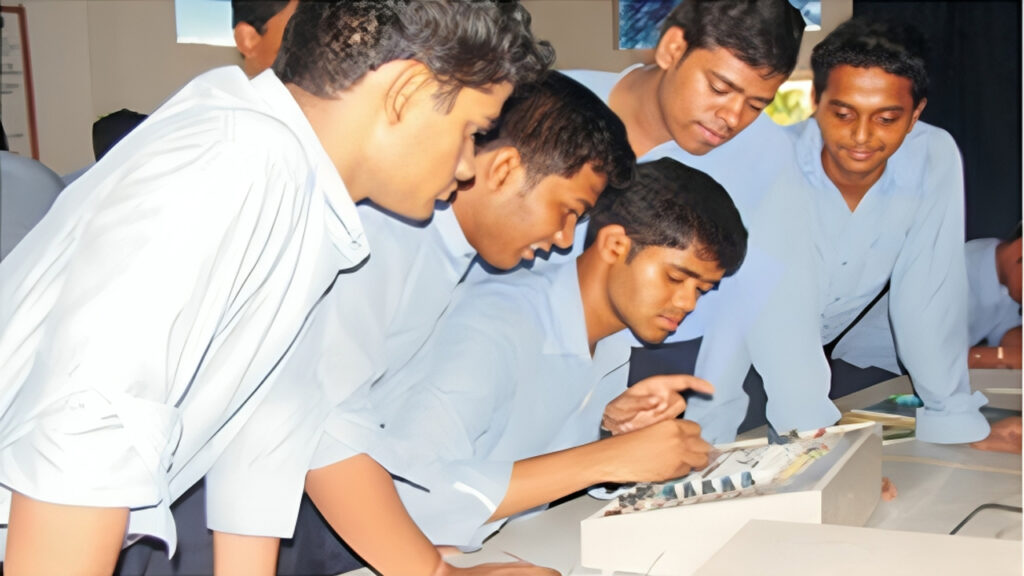
Design Innovation & Thinking (DI&T) Laboratory
Available Devices and Components: This lab typically includes 10-15 CROs. DSOs, FGs with computers configured for circuit simulation and analysis. The basic circuit components like resistors, capacitors, inductors, diodes, transistors, ICs, Arduino UNO microcontrollers, PCBs.
Software: TSPICE
Circuit Simulation Tools: SPICE (and its variants like Tspice), Multisim, and Proteus for designing and testing electronic circuits.
PCB Design Software: Tools like Eagle, Altium Designer, or KiCAD for PCB layout and design.
Other Resources: The lab includes oscilloscopes, function generators, multimeters, power supplies, soldering stations, and a variety of electronic components. Prototyping boards and PCB fabrication tools are also standard.
